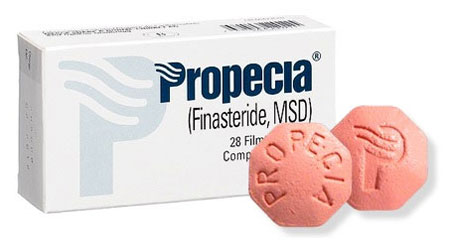Hair Loss Treatments

Alopecia, or hair loss, can result in overall thinning, patchy bald spots, or complete baldness. Some causes include medications, overall health, aging, thyroid disorders, postpartum, infections, nutrition, hair styling practices, genetics, autoimmune disorders such as alopecia areata and lupus, and chemotherapy. Treatment is often directed at the underlying cause. It is important to contact us to see Dr. Mary Noël George, a board-certified dermatologist, to evaluate your particular case of hair thinning or hair loss.
Facts
Studies have shown that the following facts about hair loss:
- 40% of men have noticeable hair loss by age 35
- 65% of men have noticeable hair loss by age 60
- 80% of women have noticeable hair loss by age 60
Hair loss can be an embarrassing issue and can leave you feeling helpless. Contact us today and we can begin treatment for your hair loss as soon as possible.
Treatments
 Propecia (finasteride) For Hair Growth
Propecia (finasteride) For Hair Growth
There are several treatments that are available to those who suffer from hair loss. One of the most effective and widely studied prescription options is Propecia (finasteride). This oral medication works by reducing levels of DHT, a hormone known to shrink hair follicles and contribute to pattern baldness. Clinical studies have shown that finasteride can significantly slow hair loss and, in many cases, promote new hair growth—especially when started early in the progression of thinning.
Each treatment offers potential benefits depending on the individual case, and at George Dermatology we tailor our approach based on your medical history, goals, and hair restoration needs.
 PRP For Hair Growth
PRP For Hair Growth
Another option is surgical hair restoration. However, this approach can be costly and does not address the underlying hormonal factors driving hair loss.
Platelet-rich plasma (PRP) therapy is also used as a non-surgical alternative. It involves injecting concentrated growth factors derived from the patient’s own blood into the scalp to help stimulate follicle activity.
Now there is an affordable way for you to improve your hair density naturally and chemical free. Platelet-rich plasma (PRP) for hair restoration involves a simple injection of your own platelets and growth factors into your scalp.
PRP works by:
- Increasing blood supply to the follicle
- Increasing size of the hair shaft (thickness)
- Triggering and maintaining the growth phase
- Decreasing overall hair loss
How PRP works
Platelets contain healing growth factors. These growth factors give instructions to your tissue to regenerate and multiply. With PRP for hair, your own growth factors stimulate the hair follicle to promote new hair growth. PRP can also reverse the miniaturization of the hair follicle and jumpstart dormant hair back into the growth stage.
- Step 1 ) Your own blood is collected in our office into a small tube
- Step 2) The tube is placed in a centrifuge to spin for 10 minutes. This separates out the red blood cells from the platelet-rich plasma (PRP).
- Step 3) Using a small needle, the PRP is strategically injected into the areas of thinning hair in your scalp.
The whole PRP treatment process usually takes less than 30 minutes to complete.
Post-Procedure Care
There is no downtime or recovery process. Avoid any blood thinners (ibuprofen such as Advil, and aspirin) after the treatment. You may take Tylenol if you experience discomfort. It is recommended that you take a warm shower the evening of the treatment. Avoid any hair dyes and chemicals to your hair for 48 hours after the procedure.
FAQ
How many treatments are required?
Dr. George recommends a series of 3 treatments spaced 1 month apart. After this, you may need maintenance treatment every 6-12 months.
Who are good candidates for PRP?
PRP works best for men and women who have early mild to moderate hair loss as a result of androgenic alopecia. Men with androgenic alopecia have a receeding hair line and thinning at the crown. Women have a widening part at the top.
Does the procedure hurt?
There may be some sensitivity. Most patients describe this as a pressure sensation. This usually resolves within 1 hour. Most patients receive the injections without any numbing.
When will I see results?
The result of thicker and healthier hair appears in 3-6 months.
Is PRP a cure for baldness?
There is no cure for hair loss. However, regular treatments of PRP can significantly slow down the effects of hair loss and increase hair density.
Are You Experiencing Hair Loss?
Sick and tired of thinning hair? Help is just one appointment away. Dr. Mary Noël George can provide you with the individualized treatment options that will work best for you and your hair.
